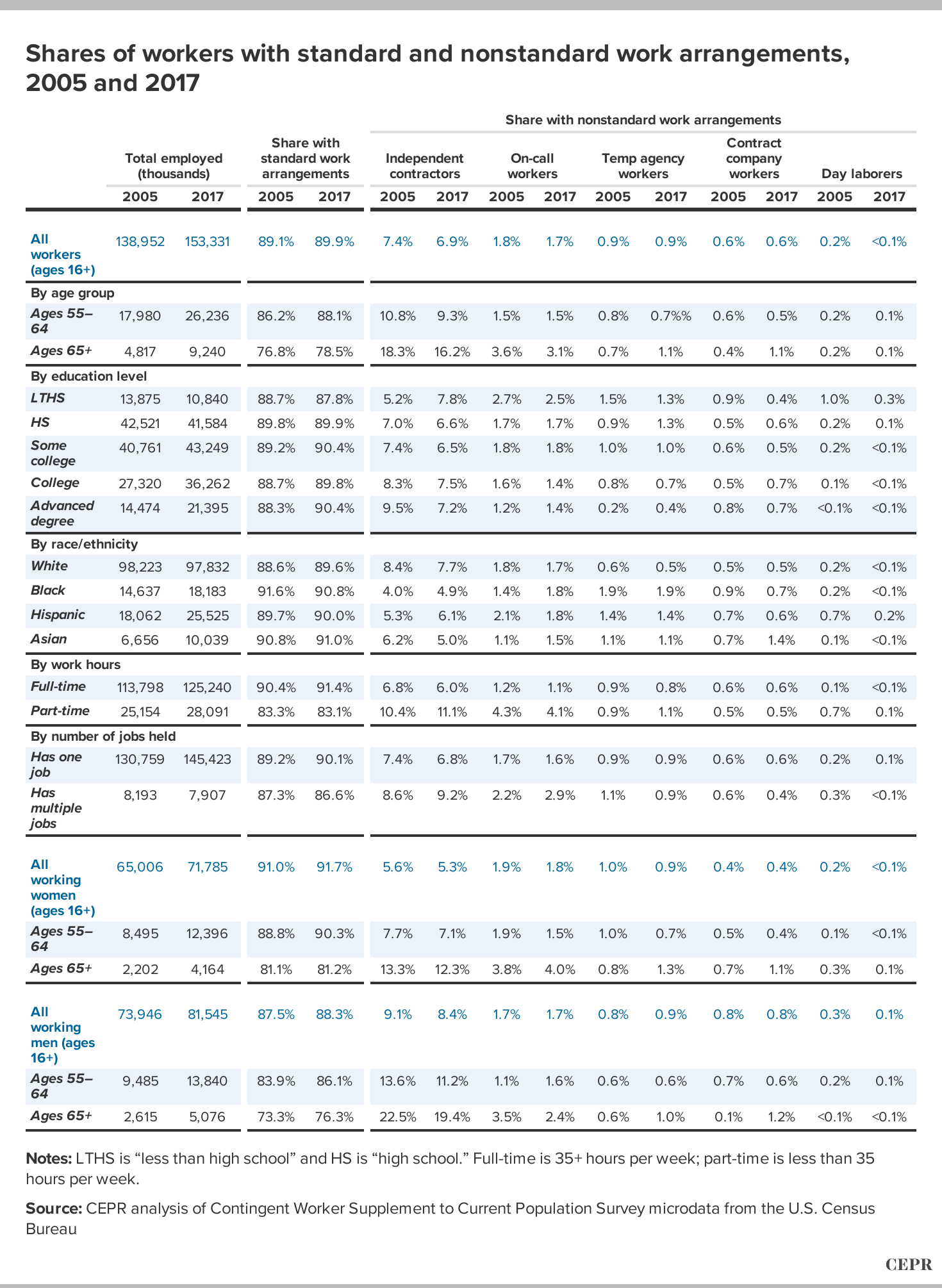Stunning What Is Nonstandard Work Arrangements

ASWB will work with candidates with other health conditions or needs to reach an agreement on relevant arrangements.
What is nonstandard work arrangements. In 1995 more than 29. These include temporary employment casual work and fixed-term contracts. The nonstandard work arrangements from 2005 to 2017.
They include temporary employment. A growing trend in the world of work in developing countries is the rise in non-standard employment. Nonstandard workers experience large benefit penalties relative to their counterparts in standard work arrangements.
As well as disguised employment and dependent self-employment. Part-time and on-call work. Non-standard forms of employment also referred to as diverse forms of work is an umbrella term for different employment arrangements that deviate from standard employment.
In other words nonstandard workers are disadvantaged by 1 their work arrangement and 2 the preponderance of low-quality jobs because they are more likely than regular full-time workers to be employed in low-quality jobs eg working in low-wage industries and occupations that lack union representation or fail to provide health insurance and pension benefits. An ITA is a voucher that an individual who has met the requirements to establish an ITA. As a result nonstandard work arrangements are typically defined by researchers as departing from the standard employment relationship on at least one dimension.
Unless otherwise required by law ASWB reserves the right to deny testing nonstandard arrangements under this category if the sole discretion of ASWB such arrangements unfairly advantage or at. The associations between non-standard work arrangements and work-related accident absence were studied with multivariate logistic regression modeling techniques while adjusting for several confounders. Nonstandard testing arrangements.
Table 1 Shares of workers with standard and nonstandard work arrangements 2005 and 2017 Total employed thousands Share with. A recent article Nonstandard work arrangements and worker health and safety published in the American Journal of Industrial Medicine describes the major standard and nonstandard work. 534 percent of workers in standard arrangements receive an employer-provided health insurance benefit compared to only 128 percent of temporary help agency worker 282 percent of on-call workers and 413 percent of workers.













